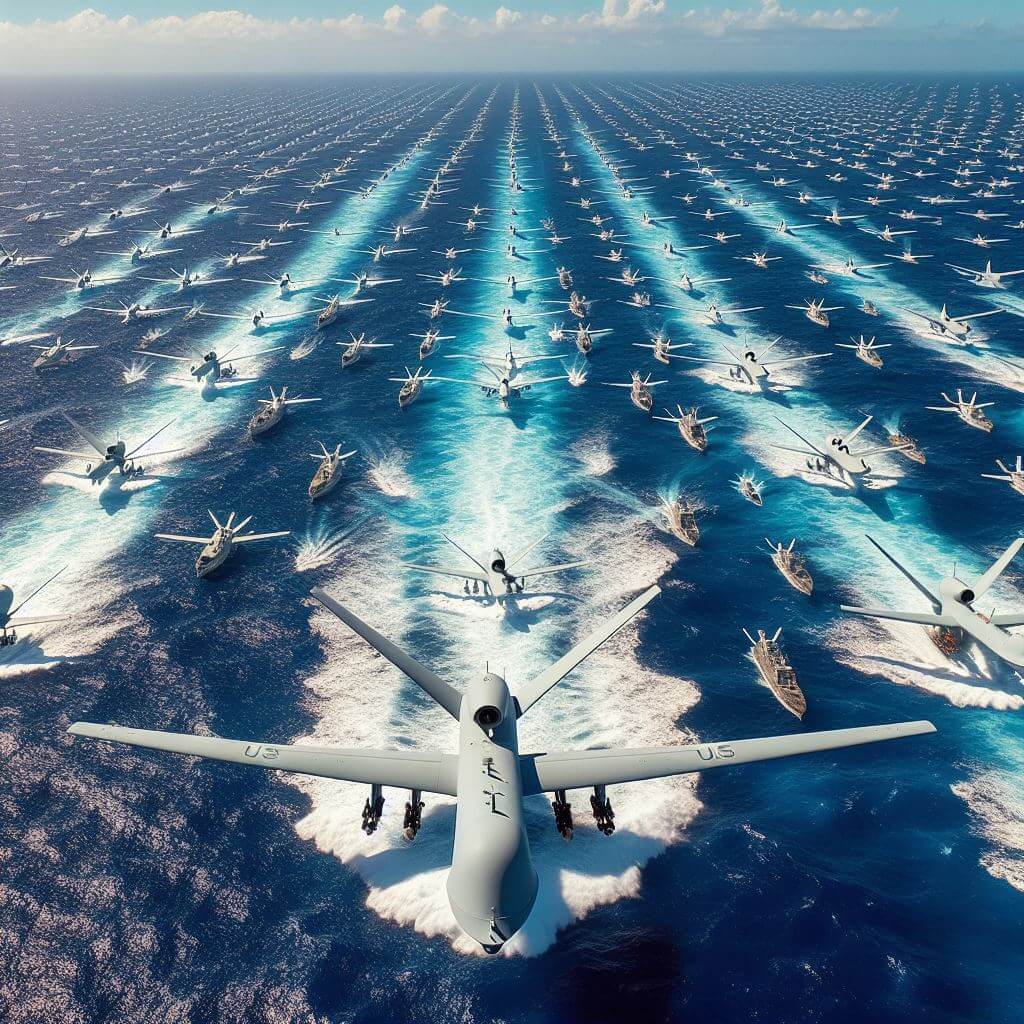

Hooyah to the recent announcement by Admiral Samuel Paparo, commander of US Indo-Pacific Command! His groundbreaking defense strategy is designed to fortify the Taiwan Strait against potential Chinese aggression. Dubbed the “unmanned hellscape,” this plan is poised to revolutionize modern warfare by leveraging a massive deployment of unmanned systems to create a formidable first line of defense.
The Strategy Unveiled
Admiral Paparo’s bold declaration at the International Institute for Strategic Studies’ Shangri-La Dialogue Summit outlines a vision where thousands of drones, ranging from surface vessels to aerial systems, would be deployed to thwart any invasion attempts by China. This strategy aims to inflict significant disruption on Chinese forces, thereby buying the US valuable time to mobilize and assist Taiwan effectively.
The essence of this approach lies in the creation of an inhospitable environment for invaders, transforming the Taiwan Strait into a perilous zone filled with autonomous defense mechanisms. This tactic not only underscores the importance of technological advancements in defense but also highlights a shift towards more innovative and less conventional methods of warfare.
Investment in Unmanned Systems
The success of the “unmanned hellscape” strategy is contingent upon substantial investments in drone technology. The US Department of Defense’s Replicator initiative is a pivotal component of this plan, aiming to develop and field thousands of autonomous systems. This initiative is a direct response to China’s overwhelming numerical advantage in terms of military assets, seeking to counterbalance it with a more sophisticated and elusive drone force.
Deputy Defense Secretary Kathleen Hicks has emphasized the critical nature of this investment, highlighting a $1 billion allocation for the fiscal year towards developing these capabilities. The goal is to create drones that are not only cost-effective but also resilient and adaptable, capable of functioning effectively in the dynamic and challenging conditions of modern warfare.
Lessons from Global Conflicts
The importance of drones in contemporary conflicts is further evidenced by their extensive use in the Russia-Ukraine war. Both sides have employed UAVs for intelligence gathering, target acquisition, and direct attacks, demonstrating the versatility and impact of these systems. Ukraine’s experience underscores the necessity for reliable, secure, and advanced drones, free from the vulnerabilities associated with Chinese-made models, which have been subject to data leaks and electronic warfare attacks.
American-made drones, powered by next-generation artificial intelligence and autonomous capabilities, have proven to be invaluable in countering Russian aggression. These drones offer a blueprint for how the US can support its allies, including Taiwan, by providing advanced UAVs that can operate independently and adapt swiftly to battlefield conditions.
Implications for US Defense and Diplomacy
The deployment of unmanned systems as a primary defense strategy marks a significant evolution in military tactics. For the US, this not only enhances its defensive capabilities but also sets a precedent for its allies and partners. The emphasis on rapid, iterative development and the integration of AI-driven technologies positions the US at the forefront of drone warfare, ensuring it remains a dominant force in future conflicts.
Furthermore, this strategy has broader implications for US foreign policy and defense diplomacy. By championing the development and distribution of American-made drones, the US can strengthen its ties with allies, deter adversaries, and promote a cohesive defense network against common threats.
Conclusion
Admiral Paparo’s vision for an “unmanned hellscape” in the Taiwan Strait is more than a defensive measure; it is a testament to the transformative power of technology in modern warfare. As the US continues to invest in and develop advanced unmanned systems, it not only fortifies its own defenses but also provides a robust support framework for its allies, ensuring a stable and secure global landscape.
For Americans for a Stronger Navy, this development reaffirms our commitment to advocating for innovative defense strategies that leverage cutting-edge technologies.
It is a call to action for continued support and investment in our military capabilities, ensuring that we remain prepared to face and overcome any challenges that lie ahead.


